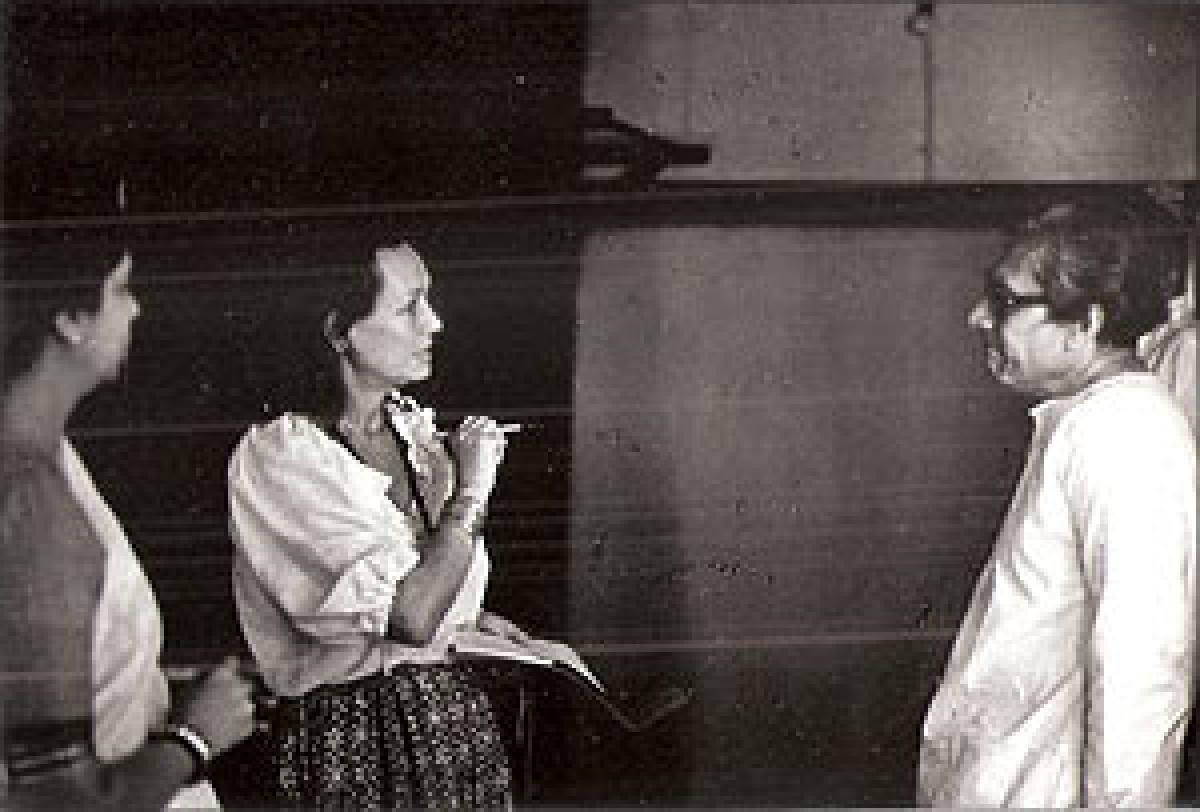Live
- 3rd Test: Day one’s play at the Gabba called off due to persistent rain
- National Energy Conservation Day: Switch to Energy-Efficient Devices
- Rekha gets emotional as she shares a heartfelt moment with Big B's grandson Agastya Nanda
- Senior Cong leader EVKS Elangovan passes away in Chennai
- CID's Counter Intelligence raids multiple places in J&K’s Anantnag, Kulgam districts
- India's growth on resilient trajectory, equity markets in consolidation phase
- KJo on 23 years of ‘Kabhi Khushi Kabhie Gham’: One of those pinch me moments
- WPL 2025 auction: Nandini, Kamalini set to be most sought-after names
- MP CM to inaugurate Sarsi resort in Shahdol, 200-bed hospital in Mauganj today
- TGPSC makes arrangements for Group-2 exams to be held tomorrow
Just In

It’s the 100th birth anniversary of Sombhu Mitra (1915-1997), who is often described as a quintessential man of Bengali theatre. Also known as a director, producer and playwright, he is considered by many to be the greatest actor on Bengali stage. He appeared first as an actor in the commercial theatre circuit around the Second World War.
 It’s the 100th birth anniversary of Sombhu Mitra (1915-1997), who is often described as a quintessential man of Bengali theatre. Also known as a director, producer and playwright, he is considered by many to be the greatest actor on Bengali stage. He appeared first as an actor in the commercial theatre circuit around the Second World War.
It’s the 100th birth anniversary of Sombhu Mitra (1915-1997), who is often described as a quintessential man of Bengali theatre. Also known as a director, producer and playwright, he is considered by many to be the greatest actor on Bengali stage. He appeared first as an actor in the commercial theatre circuit around the Second World War.
Thereafter, in 1944, he joined Indian People’s Theatre Association (IPTA), an off-shoot of a progressive association of writers and artists. His directorial debut came with Jabanbandi (Confession) of Bijon Bhattacharya, a founder member of IPTA, and Muktadhara (Released Stream) of Tagore. “Aar kato chanchabo Babu ek mutho bhater jonney?”(How long will we cry for a handful of rice?) – a dialogue from his much acclaimed Nabanna (New Harvest), a character-centred play written in the background of the worst ever famine of Bengal in 1943-44 – revealed political events through the characters.
He left IPTA in 1948 and staged two other performances of Nabanna, and Tulsi Lahiri’s Pathik (Wayfarer) under the banner of a theatre group, which in 1950 came to be known as Bohurupee (Masquerade). Under the sensational direction of Mitra, Bohurupee theatre group staged Ulukhagra (A Mere Trifle), written by Mitra, and Chenda Tar (Broken Strings) of Tulsi Lahiri. In 1951, the legendary surprised theatre lovers by presenting Bibhab (Incitement), partly based on Artaud’s surrealist theatre which emphasises the avoidance of sets and props.

© 2024 Hyderabad Media House Limited/The Hans India. All rights reserved. Powered by hocalwire.com







